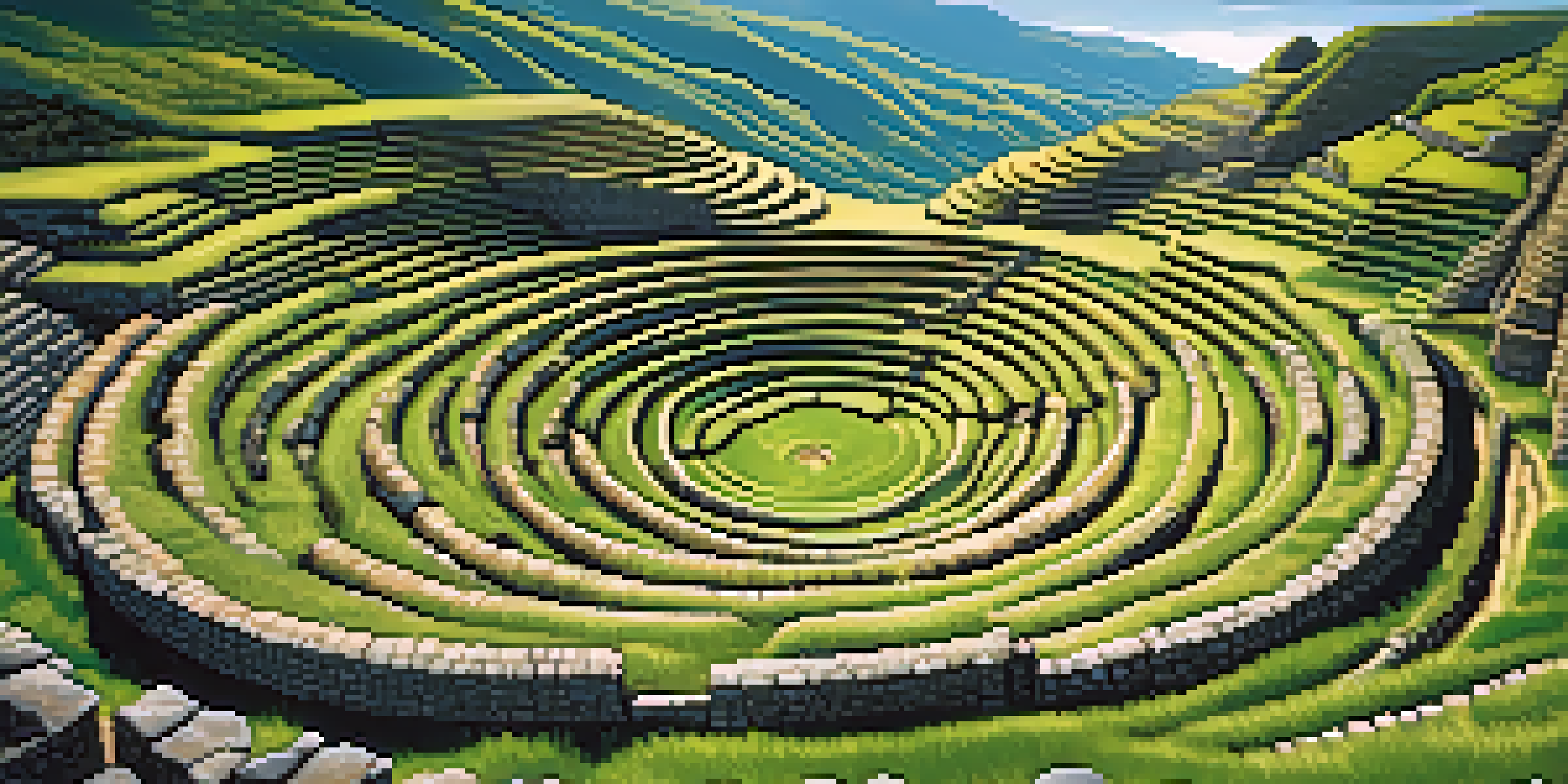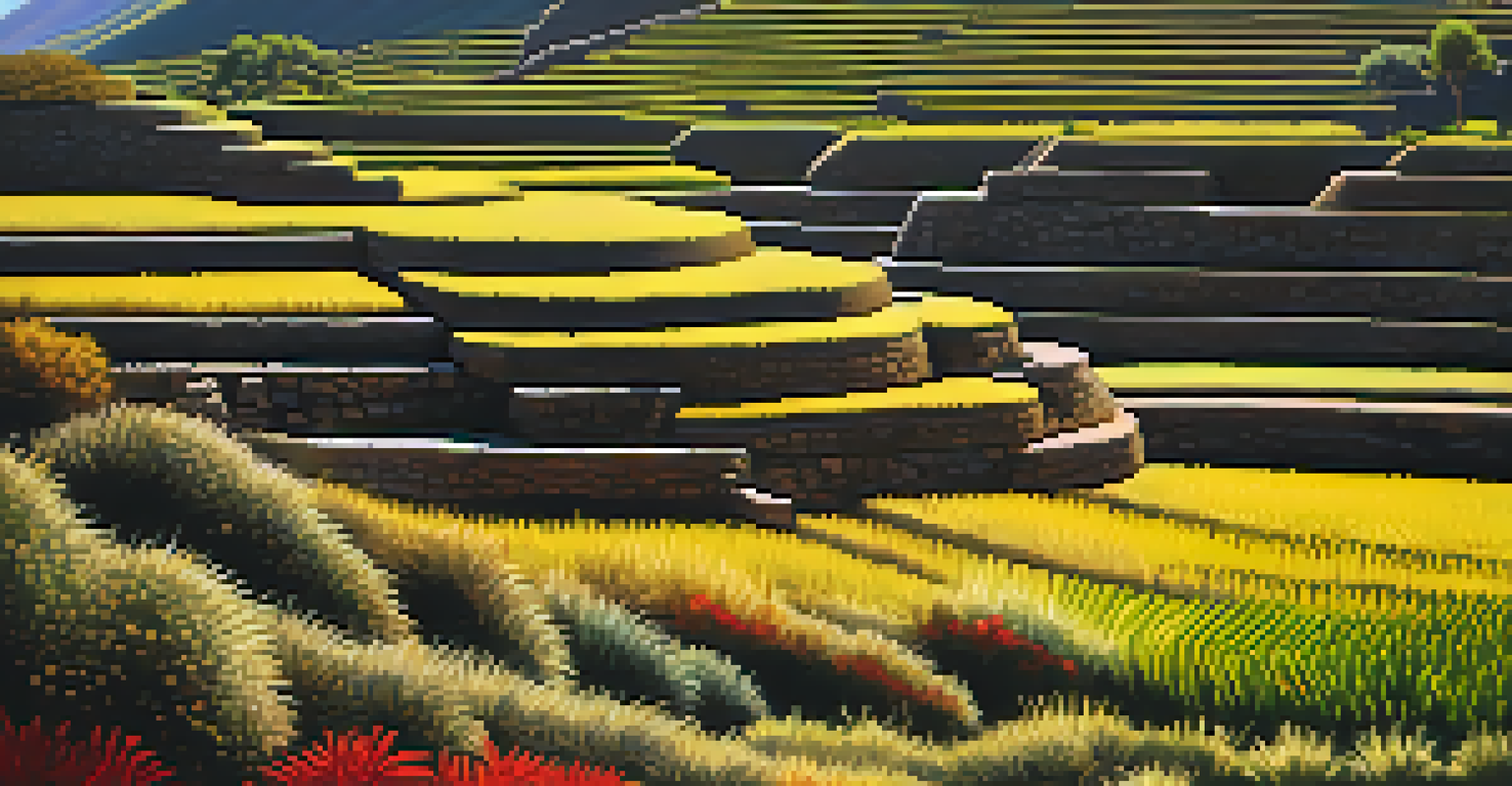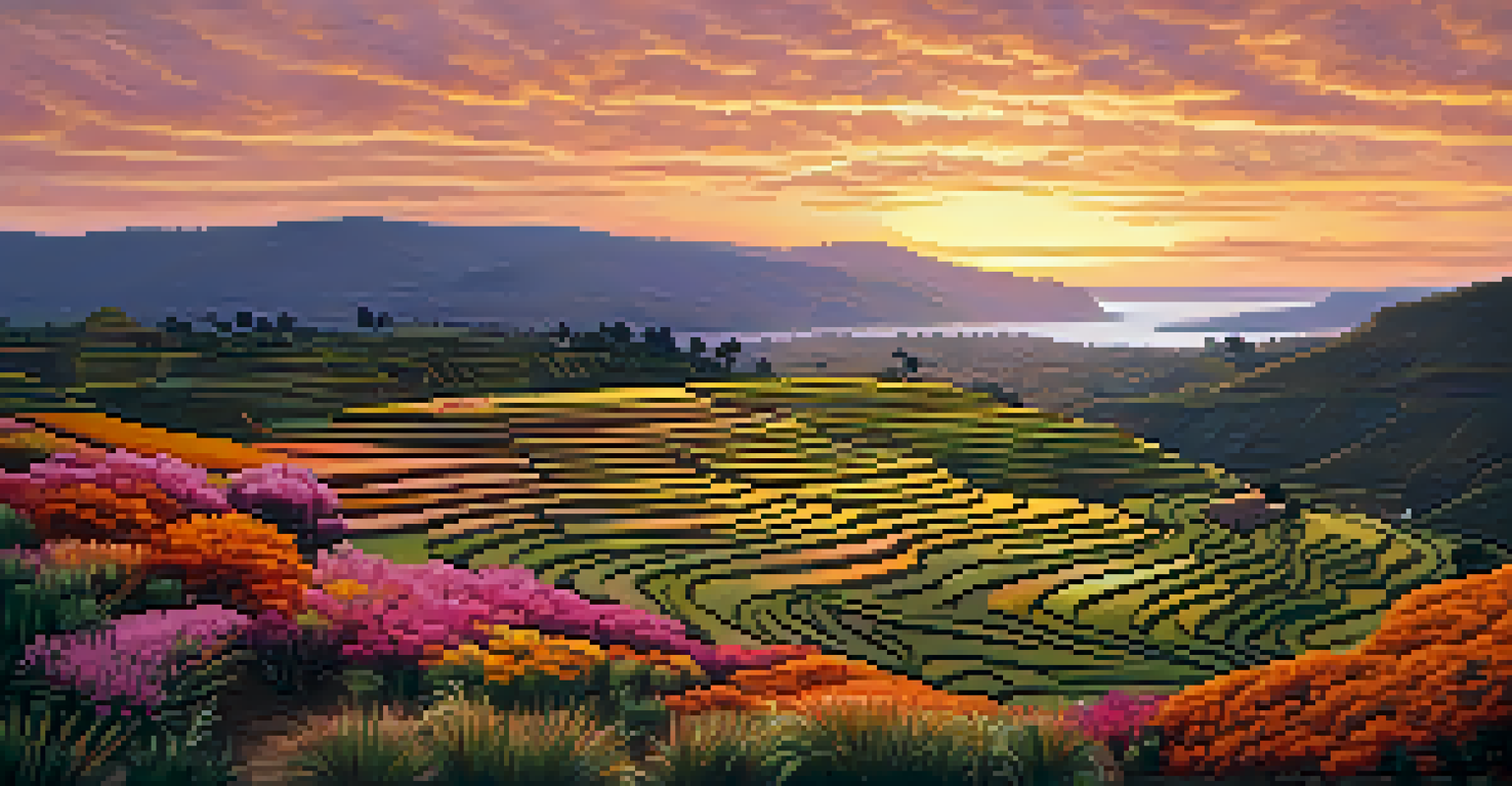Exploring Moray: The Incan Agricultural Laboratory of Peru

Introduction to Moray: A Unique Incan Site
Nestled in the Sacred Valley of Peru, Moray is a fascinating example of Incan ingenuity. This archaeological site features a series of terraced circular depressions that stand out against the Andean landscape. Built in the 15th century, Moray served as an agricultural laboratory where the Incas experimented with crop cultivation at different altitudes.
The greatest challenge to any thinker is stating the problem in a way that will allow a solution.
The site’s unique design allowed for an incredible variety of microclimates, making it possible for the Incas to test and adapt various crops. This innovative approach to agriculture helped sustain the Incan Empire during its peak. Visiting Moray is like stepping back in time, witnessing how ancient civilizations harnessed the power of nature to thrive.
As you stand amidst the terraces, you'll feel a sense of connection to the past, realizing that these agricultural practices laid the groundwork for modern farming techniques. Moray not only showcases the Incas' agricultural prowess but also their deep understanding of environmental adaptation.
The Engineering Marvel of Terraced Farming
The terraced design of Moray is nothing short of an engineering marvel. The Incas constructed multiple circular platforms, each varying in depth, creating distinct climatic zones. This allowed them to cultivate crops like potatoes, corn, and quinoa in conditions that mimicked various altitudes and climates found across the empire.

Each terrace is surrounded by stone walls that retain heat and moisture, crucial for crop growth. This carefully planned layout demonstrates the Incan understanding of irrigation and drainage, which are vital for successful farming in mountainous regions. It’s like creating a mini-ecosystem where different conditions can coexist harmoniously.
Incan Agricultural Ingenuity
Moray served as an advanced agricultural laboratory where the Incas experimented with diverse crops across varying microclimates.
The ingenuity of this design not only maximized agricultural output but also reinforced the social structure of the Incan community. By centralizing these agricultural practices, the Incas ensured food security and the ability to sustain their population, showcasing the importance of agriculture in their society.
Crops Cultivated at Moray: A Diverse Palette
Moray was not just a single-crop farming site; it was a hub for agricultural diversity. The Incas cultivated a wide array of crops, experimenting with different species and varieties to see which thrived best in specific conditions. This experimentation helped them understand which crops could grow at varying altitudes and climates.
In every walk with nature, one receives far more than he seeks.
You might find it surprising that crops like maize, potatoes, and even medicinal herbs were all cultivated here. The diversity of crops ensured that the Incan diet was rich and varied, which is essential for health and nutrition. This practice of crop rotation and diversity is a concept that modern farmers still embrace today.
By testing crops at Moray, the Incas could develop strains that were more resilient to disease and adverse weather, enhancing food security for their civilization. This agricultural wisdom is a testament to their ability to adapt and innovate in the face of environmental challenges.
The Role of Climate in Incan Agriculture
Climate played a crucial role in the agricultural practices of the Incas, especially at Moray. The site's unique terraced design allowed for the manipulation of microclimates, which was essential for successful crop cultivation. Each terrace experiences different temperatures and moisture levels, creating an ideal environment for various plants.
This understanding of climate is reflected in the way the Incas managed their agricultural practices. By selecting the right crops for the right conditions, they optimized their yields and ensured a steady food supply. It’s a bit like a chef knowing which ingredients work best together to create a delicious dish.
Cultural Ties to Agriculture
The agricultural practices at Moray were deeply intertwined with the Incas' spiritual beliefs, honoring Pachamama through farming rituals.
The Incas’ ability to adapt to and harness their environment is a lesson for modern agriculture. As we face climate challenges today, understanding how past civilizations thrived can provide valuable insights into sustainable practices.
Cultural Significance of Moray in Incan Society
Moray was more than just an agricultural site; it held significant cultural importance for the Incas. The agricultural practices at Moray were tied to their religious beliefs, as they revered Pachamama, the Earth Mother. The careful cultivation of crops was seen as a way to honor her and ensure bountiful harvests.
Festivals and ceremonies often revolved around agricultural cycles, reflecting the deep connection between farming and spirituality. The Incas understood that their survival depended on the gifts of the land, and they celebrated this relationship through various rituals. Visiting Moray gives you a glimpse into how agriculture and spirituality were interwoven in their culture.
Today, this cultural significance remains, as local communities still honor traditional agricultural practices. Understanding the role of sites like Moray helps us appreciate the rich history and traditions of the Andean people.
Visiting Moray: What to Expect
If you're planning a visit to Moray, you're in for a treat! The site is easily accessible from the nearby town of Urubamba and offers stunning views of the surrounding landscape. As you walk along the terraces, you’ll be able to witness firsthand the ingenuity of Incan engineering and the beauty of their agricultural practices.
Guided tours are available, providing insights into the history and significance of Moray. Knowledgeable guides can share fascinating stories about the Incas and their connection to the land, making your visit all the more enriching. Don’t forget to bring your camera; the photo opportunities are endless!
Lessons for Modern Farming
The innovative techniques developed at Moray provide valuable insights into sustainable agriculture that are relevant in today’s environmental challenges.
As you explore, take a moment to reflect on the enduring legacy of the Incas. Moray stands as a testament to their innovative spirit, reminding us of the importance of sustainable farming practices in our own lives today.
Conclusion: The Legacy of Moray
Moray is more than just an archaeological site; it is a symbol of the Incan legacy in agriculture. The innovative practices developed here have influenced farming techniques for generations, showcasing the Incas’ deep understanding of their environment. As we explore this remarkable site, we gain insight into the resilience and resourcefulness of an ancient civilization.
The lessons learned from Moray resonate today, highlighting the importance of sustainable agriculture in the face of modern challenges. By respecting and learning from these ancient practices, we can work towards a more sustainable future for our own food systems. It’s a reminder that looking to the past can inspire solutions for today’s issues.

As you leave Moray, carry with you the knowledge of its rich history and the enduring spirit of the Incas. Their agricultural innovations not only fed their empire but continue to inspire modern practices, ensuring that their legacy lives on.